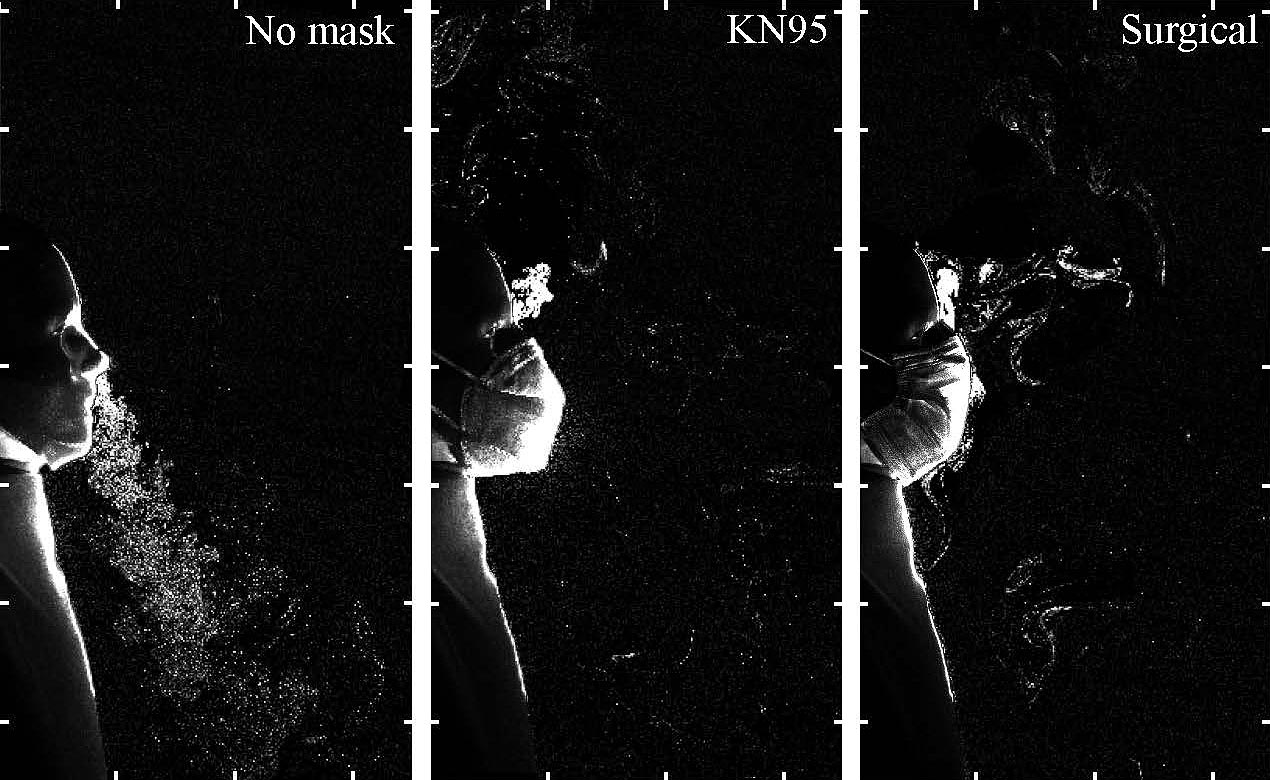Most Common COVID Masks Only Filter About 10% of Exhaled Aerosol Droplets
0 View
Share this Video
- Publish Date:
- 23 August, 2021
- Category:
- Covid
- Video License
- Standard License
- Imported From:
- Youtube
Tags

Credit: University of Waterloo
Research supports widespread use of better masks to curb COVID-19 indoors.
A new study highlights the need for widespread use of better face masks and the importance of good ventilation to reduce the spread of COVID-19 indoors.
Technical researchers at the University of Waterloo conducted experiments using a mannequin to simulate a seated person breathing in a large room. The studies showed significant accumulation of aerosol droplets — exhaled droplets so small that they float and travel through the air — despite the use of regular clothing and blue surgical masks.
“There is no doubt that wearing a face covering is beneficial both for near and remote protection in a room,” said Serhiy Yarusevych, a professor of mechanical and mechatronics engineering and the leader of the study. “However, there is a very big difference in the effectiveness of different masks when it comes to controlling aerosols.”
Video made by Waterloo Engineering researchers shows how much aerosol-laden exhalation flow escapes unfiltered when (left to right) no mask, a KN95 mask and a surgical mask are worn.
Previous research has found that aerosols spread by infected people are a source of transmission of the SARS-CoV-2 virus that causes COVID-19, even outside the two-meter social distancing zone generally recommended by public health officials.
The study found that the most common masks, primarily due to fit issues, filter out about 10 percent of exhaled aerosol droplets. The remaining aerosols are diverted, usually from the top of the mask where it fits over the nose, and escape unfiltered into the ambient air.
In contrast, more expensive, higher-quality N95 and KN95 masks filtered out more than 50 percent of exhaled aerosols that can accumulate indoors and spread the COVID-19 virus when inhaled by other people.
Yarusevych, principal investigator in the Fluid Mechanics Research Lab, said the much greater effectiveness of N95 and KN95 masks versus cloth and surgical masks makes a compelling case that they should be worn indoors as much as possible, such as schools and workplaces.
“A lot of this may seem like common sense,” he said. “For example, there’s a reason doctors wear N95 masks – they work much better. The novelty here is that we’ve provided solid numbers and rigorous analysis to back up that assumption.”
Experiments also quantified the impact of ventilation systems, which circulate and replace air in rooms, on aerosol build-up. Even modest ventilation rates have been shown to be as effective as the best masks in reducing the risk of transmission.
Ideally, Yarusevych said, the evidence suggests that high-quality masks and good ventilation should be used in combination to minimize the threat of indoor aerosol build-up.
Reference: “Experimental Investigation of Indoor Aerosol Dispersion and Accumulation in the Context of COVID-19: Effects of Masks and Ventilation” by Yash Shah, John W. Kurelek, Sean D. Peterson, and Serhiy Yarusevych, July 21, 2021, Physics of Fluids.
DOI: 10.1063/5.0057100
Yarusevych worked with Sean Peterson, also a Waterloo professor of mechanical and mechatronics engineering, and engineering PhD students Yash Shah and John Kurelek.










